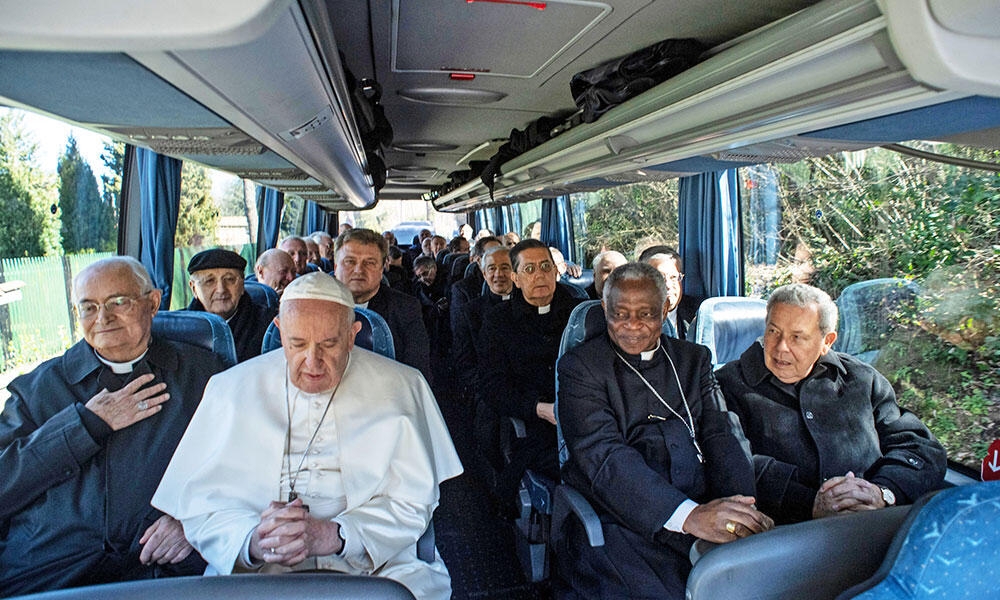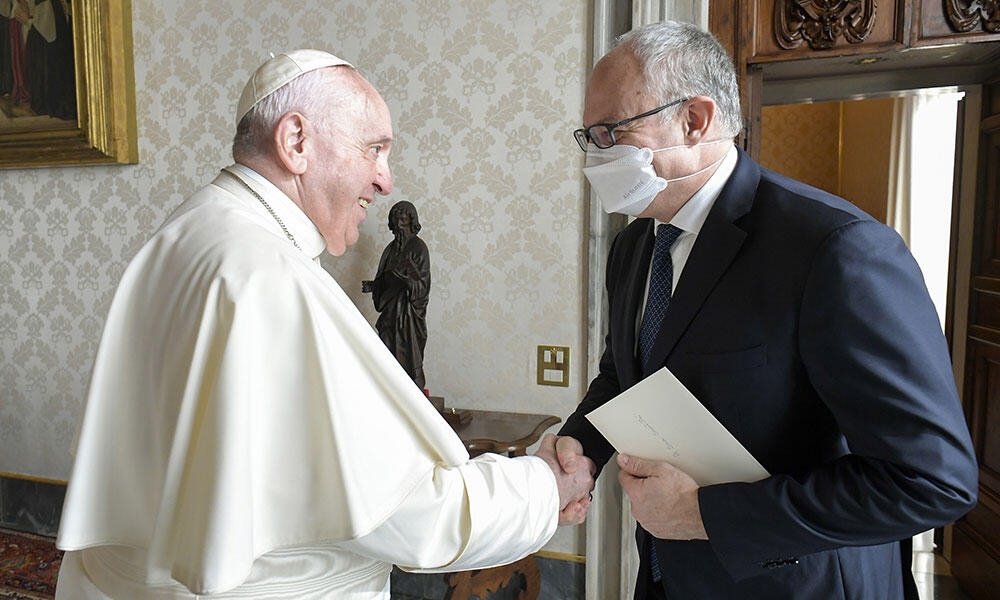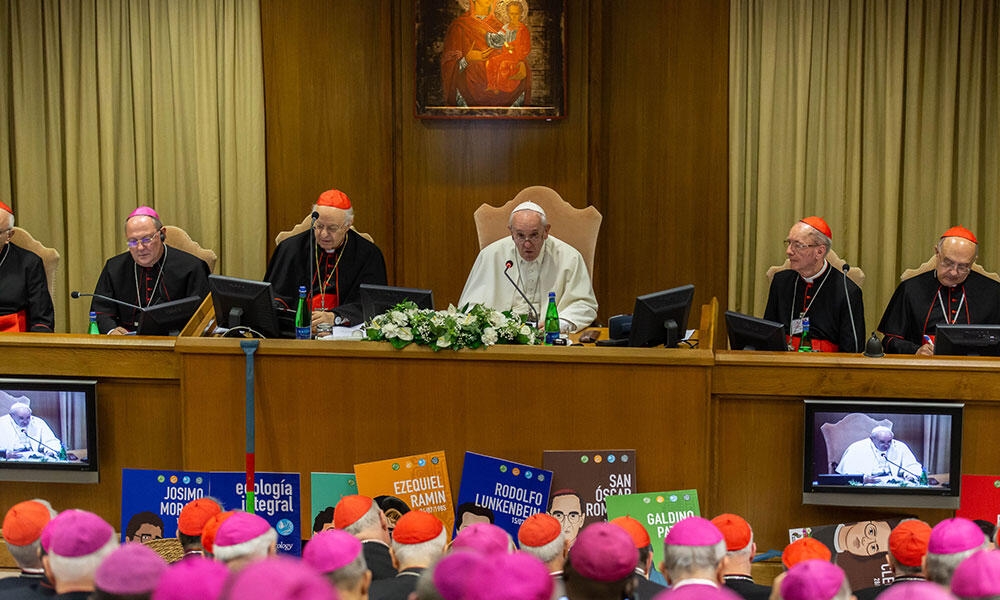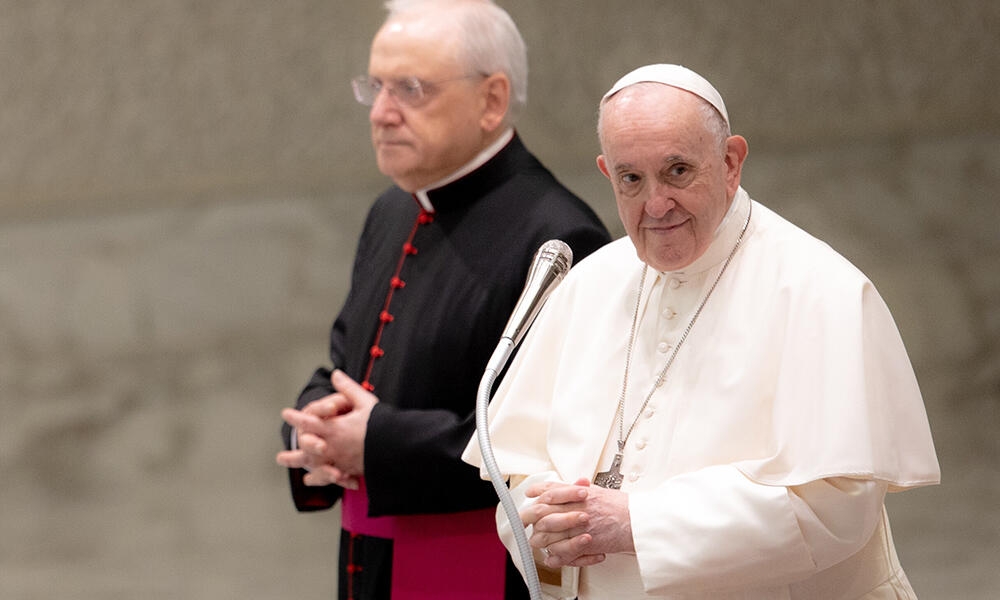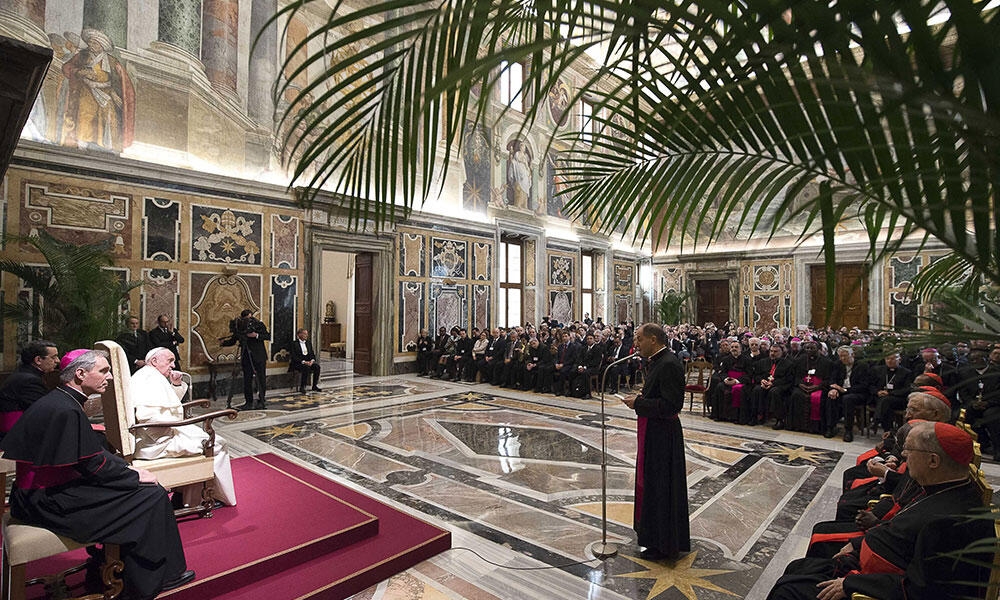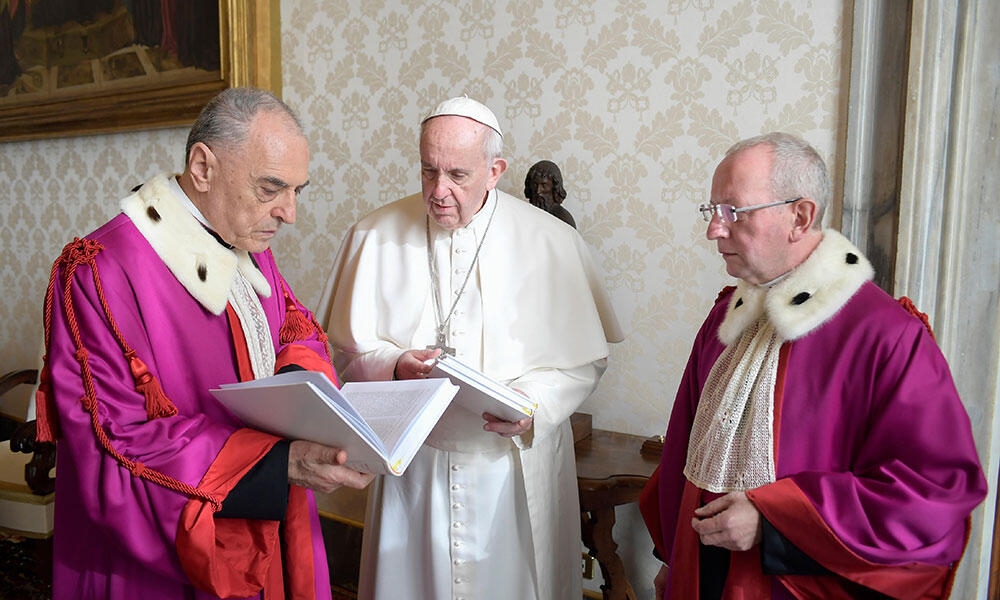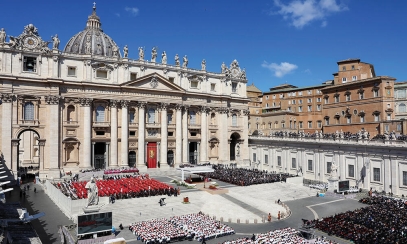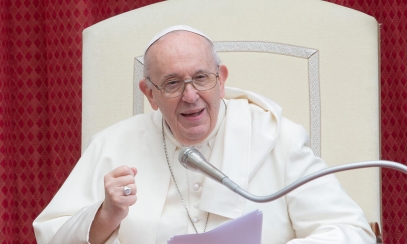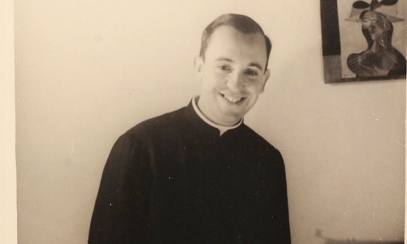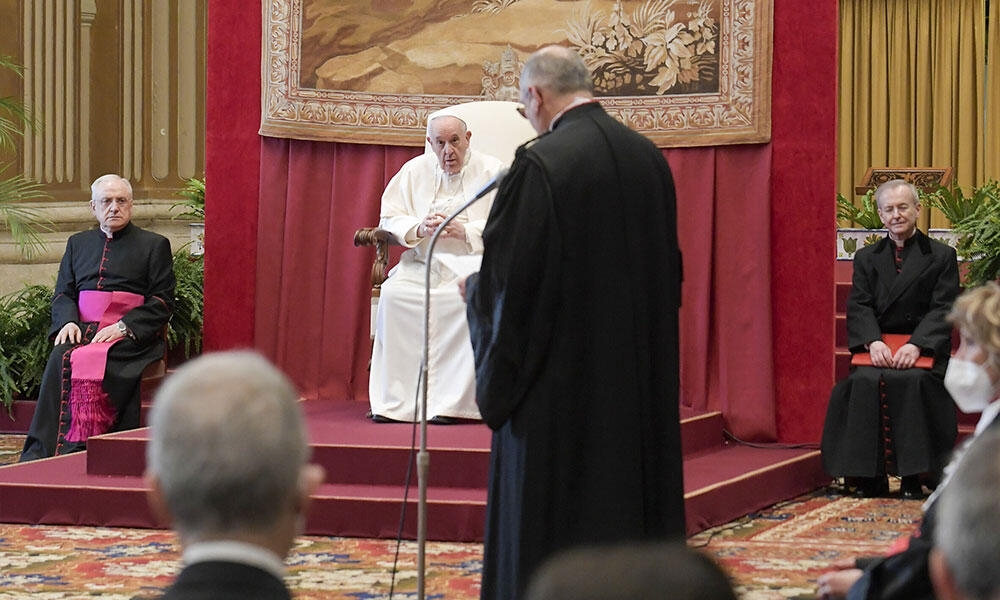
A determined reformer
Pope Francis will be remembered for many poignant moments, his humility, sense of humor, and powerful words whether written in encyclicals, preached in sermons or posted via @Pontifex.
Pope Francis will be remembered for many poignant moments, his humility, sense of humor, and powerful words whether written in encyclicals, preached in sermons or posted via @Pontifex.
Behind the scenes, however, Pope Francis instituted substantial reforms — of the Vatican Curia, finances, and even the Code of Canon Law and the Catechism of the Catholic Church. Many of the reforms were undertaken in order to further his goal of a “healthy decentralization” of power, giving more decision-making authority to local bishops. He made frequent use of the motu proprio (“of his own accord”) to make changes to Church law, issuing 75 during his papacy.
For example, Pope Francis used the motu proprio to:
- hold bishops and religious superiors accountable for “negligence” in handling cases of sexual abuse of minors (2016)
- revise paragraph #2267 of the Catechism declaring the death penalty “inadmissible because it is an attack on the inviolability and dignity of the person” (2018)
- issue guidelines for the handling of clergy sex abuse allegations against bishops (2019)
- require greater transparency and competition in procedures for awarding public contracts of the Holy See and Vatican City State (2020)
- transfer financial responsibilities from the scandal-plagued Vatican Secretariat of State to the Patrimony of the Apostolic See, the Vatican’s central bank (2020)
- revise canon law to open the ministries of lector and acolyte to women, creating institutional support for what had already been common practice (2021)
- limit the use of the pre-Vatican II Latin Mass, known as the “extraordinary form,” giving bishops the authority to regulate where and when these liturgies take place (2021)
On the ninth anniversary of Francis’ election as pope, in March 2022, he released the apostolic constitution Praedicate evangelium (“Preach the Gospel”), which includes several reforms to the Vatican Curia and paves the way for more participation and decision-making roles for the laity. The restructuring of the Curia makes it better able to serve local churches and promotes its mission of evangelization. Many of these reforms were instituted over the course of his papacy, and this document codified them.
Areas of reform
Sex abuse
As revelations of clergy sex abuse by priests and bishops came to light during his papacy, Pope Francis made reforms to Church law and practice to ensure greater transparency and accountability.
In 2019, Pope Francis wrote a letter to the U.S. bishops during their retreat to discuss the clergy sex abuse crisis, “encouraging your prayer and the steps you are taking to combat the ‘culture of abuse’ and to deal with the crisis of credibility.”
In 2014, he formally established the Pontifical Commission for the Protection of Minors, which in 2022 became part of the Dicastery for the Doctrine of the Faith, giving it more authority and direct access to the Holy Father.
At its 2024 plenary assembly, Pope Francis encouraged the commission to continue helping the Church safeguard minors and vulnerable people by ensuring a climate of listening and respect.
Women in the Church
During his papacy, Pope Francis affirmed the importance of including women in leadership positions in the Church. For example, in a subtle but significant action, Pope Francis issued a January 2021 motu proprio opening the ministries of lector and acolyte to women. While women serving as lectors, altar servers and extraordinary ministers of holy Communion has been a common practice in many communities, the new ruling adds the weight of an institutional mandate to these roles.
Pope Francis used the motu proprio to revise canon law to open the ministries of lector and acolyte to women, creating institutional support for what had already been common practice.
Pope Francis also opened the door to women in the highest levels of Church leadership in his 2022 apostolic constitution Praedicate evangelium. The constitution underlines that “any member of the faithful” can lead one of the newly constituted Vatican dicasteries or other bodies, “given their particular competence, power of governance and function.” This means that these positions would be open not only to bishops and clerics, but also to laymen and laywomen.
Financial reforms
Pope Francis continued efforts begun by Pope Benedict XVI to get Vatican finances in order and promote greater transparency. Early in his papacy, he created the Secretariat for the Economy to begin the process of financial reform. In 2020, he stripped the Secretariat of State of its financial assets and put them under the Administration of the Patrimony of the Apostolic See (APSA). The Secretariat office is one of the most powerful in the Vatican because it oversees diplomatic affairs and day-to day administrative functions. The papal decree on this topic stated that, although the Secretariat of State performs essential duties, “it’s not appropriate for it to perform those economic and financial functions already attributed to other competent departments.”
Although Pope Francis’ papacy was not immune to financial scandals, he made a great effort to put controls in place to provide monitoring and oversight of finances.
The reform of the Roman Curia is to be viewed in the context of the Church's missionary nature." - Praedicate evangelium

